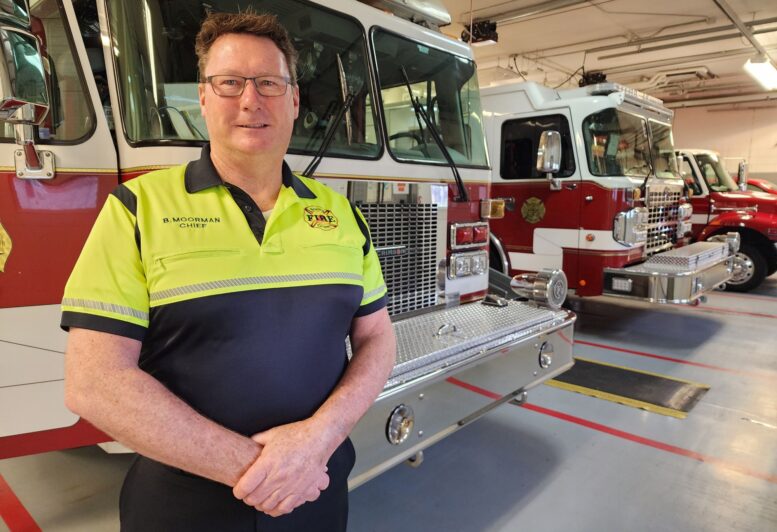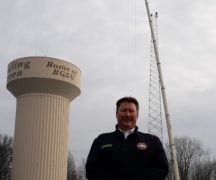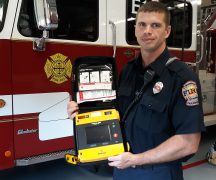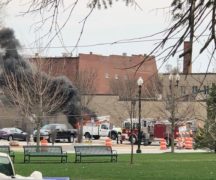By JAN McLAUGHLIN
BG Independent News
In fire and EMS responses, it’s all about time. Seconds can make a difference. Multiple calls at once can stretch services. And hospital bypasses eat up precious chunks of time.
Bowling Green Fire Chief Bill Moorman agonizes over those stats, and is constantly looking for ways to shave off seconds.
“It’s all about numbers,” he said.
Over the years, BG Fire Division has seen its call volume tick up, creating more overlaps when the division is responding to multiple calls at the same time.
In 2023, the overlapping of calls occurred an average of 68% of the time. On Thursday, Friday and Saturday nights, that stat could jump to 85% of the time, the chief said.
“That’s one of the most concerning things to me,” Moorman said. “For me, this is one of the most important things I need to tackle.”
In 2023, the fire division responded to 3,583 incidents, about 200 more than the previous year. Seeing the need for more staff, city leaders approved the hiring of six additional firefighters.
“That was a big deal for us, now we can man a third ambulance,” Moorman said.
Nearly 80% of emergency calls coming into BGFD are EMS runs. Last year, the department responded to 2,752 EMS runs, 320 fire calls, 96 hazardous material incidents, 12 tech calls, and five mutual aid runs to neighboring areas.
The chief’s goal is to have an ambulance or fire truck on the scene within six minutes. Any longer than that, and survivability chances drop. The stats collected from last year, show the department meeting that goal.
Because time is crucial, the fire division tracks response times for each call, and studies those minutes and seconds between the alarm coming in and an “effective response force” arriving on the scene.
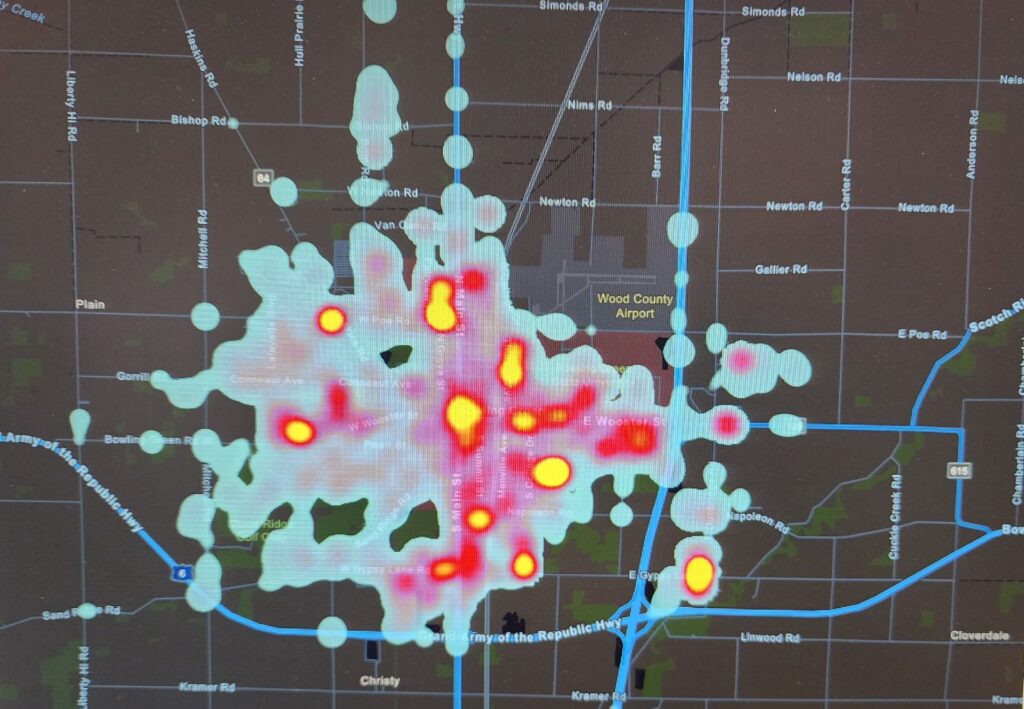
The response data is broken down for type of calls, turnout time, travel time, response time for each four wards in the city, and for each of the two fire stations.
Some response times are out of the fire division’s control. For example, if Wood County Hospital ER goes on bypass due to high patient numbers there, the BG ambulances must transport patients to hospitals in Toledo.
In those cases, a 15-minute turnaround run to Wood County Hospital turns into a 1½-hour trip to St. Vincent Mercy Medical Center, Moorman said. That means off-hours fire division staff must be called back to the station or staff must stay overtime to make sure each fire station here is adequately staffed.
The fire division currently has 56 firefighters, 72% who are paramedics, and the rest who are training to become one.
Minimum staffing at the Court Street and the Pearl Street stations is 12 firefighters, but ideal is 17.
“We’re really good on personnel where we’re at right now,” Moorman said.
Sometimes it’s the equipment that creates concerns. Recently, one of the ambulances hit a deer in front of Wood County Hospital. The deer kept running, but the ambulance was out of service for a few days.
“That’s how quickly things can go bad,” Moorman said.
But the fire division has devised a way to respond to overlapping calls quicker, the chief explained. Ambulances previously staffed with three people are now staffed with two. A fire engine also responds with an additional three people.
If the EMS call is serious, all those firefighters may be needed. “It takes a lot of people to do effective CPR,” Moorman said. “Before, we’d have to play catch up.”
If the EMS run is not serious, the ambulance crew sends the fire engine back in service. Since all fire engines are now equipped for Advanced Life Support, rather than just basic first aid, those crews can get to any overlapping calls faster since they are in the truck ready to respond.
In addition to tracking the response time to emergency calls, the fire division also keeps data on where emergencies occur. The most recent map shows the frequency of calls to certain areas with glowing colors dotting the downtown, nursing home facilities, industrial areas, and the BGSU campus.
City officials have identified the need for a new fire station to take the place of the Court Street station, which is no longer structurally sound. Using the response maps, a team of Ohio fire chiefs and city officials are studying the best location for a new fire station, two new fire stations, or one new station and a satellite station in the northern part of the city.
And the fire chief is always aware of the looming expense of new fire vehicles. The department currently has four fire engines (two at each station) and one ladder truck. Getting a new fire truck can take three years lead time, and cost up to $860,000.
“We maintain our vehicles very well because they are so expensive to replace,” Moorman said.

